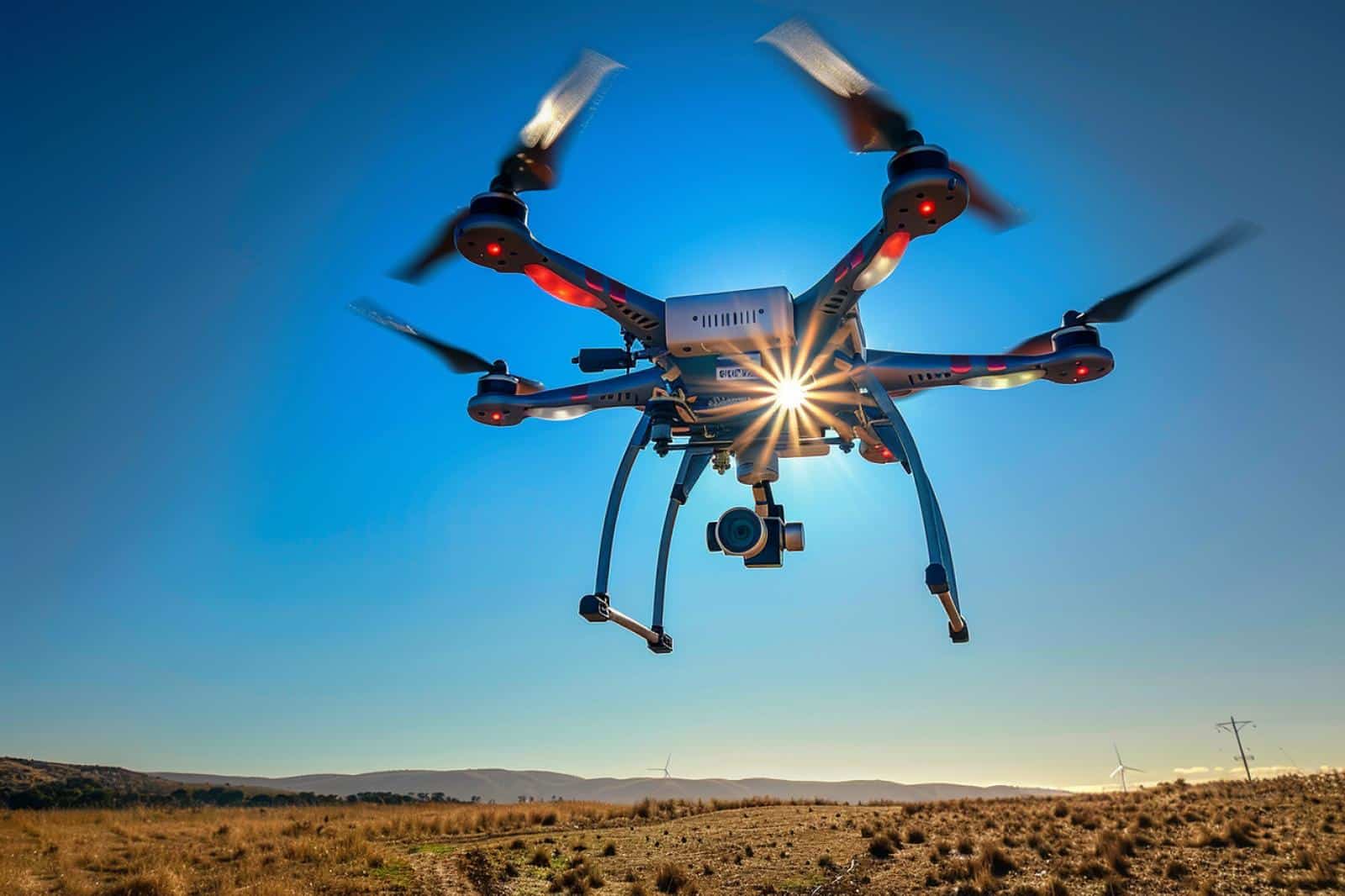What Are the Limitations of Current Drone Flight Range for Hobbyists?

Have you ever wondered how high or far your drone can fly? As drone technology continues to improve, the limitations of drone flight range become a significant topic of interest among hobbyists. The Federal Aviation Administration (FAA) sets certain rules and regulations regarding drone usage, which includes limitations on flight range. This informative piece will guide you through the current drone flight range limitations for hobbyists, the factors affecting it, and the FAA rules that regulate it.
Understanding Drone Technology
Before we dive into the limitations of drone flight range, it’s crucial to understand drone technology. A drone, technically known as an Unmanned Aircraft System (UAS), is an aircraft without a human pilot on board. They are flown remotely, usually by a ground-based controller.
En parallèle : How Can Drones Enhance the Experience of Outdoor Adventures?
In recent years, drones have seen a surge in popularity, especially among recreational users. This surge is primarily due to advancements in drone technology that have made drones more accessible and easier to fly. Drones come in various shapes and sizes, from small, lightweight models used for fun, to larger, more complex drones used for professional aerial photography and videography.
However, despite these advancements, drones do have their limitations, mainly in terms of flight range and battery life. The flight range refers to how far the drone can fly from the controller before losing connection. On the other hand, battery life determines how long your drone can stay airborne. Both these factors are intertwined and vital in determining the overall performance and functionality of a drone.
A découvrir également : How Are Personal Drones Being Used in Amateur Filmmaking?
FAA Rules on Drone Flight Range
The FAA is the governing body that regulates all aspects of civil aviation, including drone usage. It has established rules regarding the flight range of drones to ensure the safety of both the drones and other aircraft sharing the airspace.
According to the FAA, recreational drone operators must adhere to specific guidelines. For instance, the altitude limit for drones is set at 400 feet above ground level. This limit is to prevent possible conflicts with manned aircraft, which generally fly at higher altitudes.
Additionally, the FAA stipulates that drones should always remain within the visual line of sight (VLOS) of the operator. In other words, you must be able to see your drone with your naked eye at all times while it is in flight. If your drone flies beyond your line of sight, you’re potentially breaking the law.
It’s also worth noting that different rules may apply for drone flights in specific states or regions. Therefore, drone operators are advised to familiarize themselves with local laws and regulations before flying.
Factors Affecting Drone Flight Range
Several factors can influence the flight range of your drone. Understanding these factors will assist you in maximizing your drone’s potential while adhering to FAA rules.
One of the most significant factors affecting drone flight range is the battery. The battery determines how long the drone can stay in the air. Most drones have a flight time of between 15 to 30 minutes before the battery needs recharging. However, several high-end models now offer longer flight times, thanks to advancements in battery technology.
The type of controller also plays a significant role in determining the drone’s flight range. Some controllers use Wi-Fi, which typically has a range of around 100 meters. However, more advanced controllers use radio waves, which can control drones up to several kilometers away.
Environmental factors, such as wind speed and direction, temperature, and humidity, can also impact the flight range. For example, drones will generally have a shorter range in windy conditions as more battery power is needed to combat the wind.
Extending Your Drone’s Flight Range
While FAA guidelines and technological limitations are in place, several techniques can help maximize your drone’s flight range. First and foremost, always ensure your drone’s battery is fully charged before each flight. This practice can help extend your drone’s airtime.
Additionally, flying your drone in optimal conditions can also enhance its range. Avoid flying your drone in windy or rainy conditions, as these can drain the battery faster and shorten the flight range.
Investing in a high-quality controller can also significantly increase your drone’s range. Controllers that utilize radio waves can offer a longer range than those that use Wi-Fi.
Remember, while it may be tempting to push your drone to its limits, always adhere to FAA rules and guidelines. These are put in place to ensure the safety of all users of the airspace. Failure to comply can result in hefty fines and penalties.
Drones of the Future: A Look Ahead
While current drones have their limitations, the future of drone technology is promising. With continuous advancements in battery technology and flight systems, we can expect future drones to have significantly longer flight ranges and air times.
Moreover, the FAA is actively working on integrating drones into the national airspace system. This integration may lead to changes in regulations, possibly allowing drones to fly beyond the visual line of sight and at higher altitudes, under certain conditions.
While we await these advancements, it’s crucial to make the most of what current drone technology offers, while respecting the rules and guidelines set by the FAA. This approach will ensure a safe and enjoyable drone flying experience for all.
Drone Usage in Law Enforcement and Compliance with Drone Laws
Beyond recreational use, drones have been found to be of significant use in law enforcement. Law enforcement agencies across the United States are increasingly utilizing unmanned aircraft systems for diverse operations including surveillance, search and rescue missions, and crime scene investigations. However, like hobbyist drone pilots, these agencies must also adhere to the drone laws stipulated by the Federal Aviation Administration.
The FAA requires that all drones weighing between 0.55 and 55 pounds be registered, and this includes drones used by law enforcement. The drone registration process involves providing the FAA with the operator’s name, email, and home address, as well as the make, model, and serial number of the drone. This information is necessary to maintain accountability and ensure that operators adhere to the established drone range regulations.
Furthermore, unlike manned aircraft, drones used by law enforcement should not fly higher than 400 feet AGL (above ground level). This is to avoid potential conflicts with other aircraft that typically operate at higher altitudes.
However, the FAA does provide exceptions for law enforcement agencies under certain circumstances. For example, during an active emergency situation, the FAA can issue a special Temporary Flight Restriction (TFR) that allows law enforcement drones to exceed the usual altitude limits.
It is important to note that these exceptions are strictly regulated and agencies must comply with the FAA’s requirements to obtain a TFR. These requirements include demonstrating an urgent need for the flight that outweighs any potential risks to other aircraft.
The Future of Commercial Drone Usage and Limitations
Drone technology is not only popular among hobbyists and law enforcement, but it is also making significant inroads in the commercial drone industry. More businesses are exploring the use of small unmanned aerial vehicles for tasks like package delivery, aerial surveying, and even passenger transportation.
However, commercial drone operators also face similar challenges with drone flight range and must comply with the same FAA regulations. Currently, commercial drones must also adhere to the 400 feet AGL altitude limit, and should not fly beyond the operator’s visual line of sight.
But the future of commercial drone usage looks promising. The FAA is exploring the concept of Beyond Visual Line of Sight (BVLOS) operations, which would allow drones to fly beyond the visual range of the operator. If approved, this could significantly increase the drone range and efficiency of commercial drones.
Moreover, advancements in drone technology are also expected to address the issue of limited flight time. More efficient batteries, lighter materials, and smarter flight systems could potentially extend the flight duration of drones, benefiting both recreational flyers and commercial operations.
Conclusion: Navigating the World of Drones Responsibly
Whether you’re a hobbyist drone pilot, a law enforcement officer, or a commercial drone operator, it’s vital to understand the current limitations of drone technology and the regulations governing drone flight. As the drone landscape continues to evolve, so will the laws and regulations governing their use.
While it’s exciting to explore the capabilities of your drone, remember to always adhere to FAA regulations. This not only ensures your safety but also the safety of others sharing the airspace. Always keep your drone within your visual line of sight and below the 400 feet AGL limit unless you have special permissions.
Despite the current limitations, the future of drone technology looks promising. As we look ahead, we anticipate significant advancements that will enable longer flight times, greater ranges, and more efficient operations. But regardless of where the technology leads us, one thing remains constant: the need for responsible and law-abiding drone operation. After all, the sky is not just for us to explore, but to respect and protect as well.
